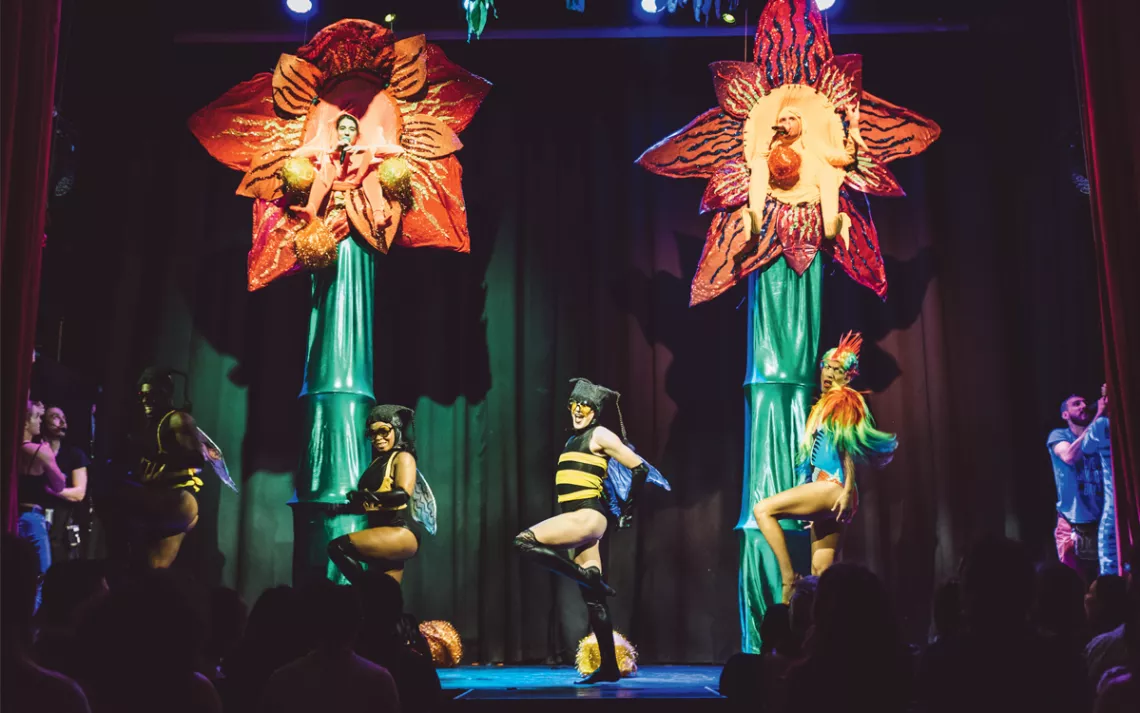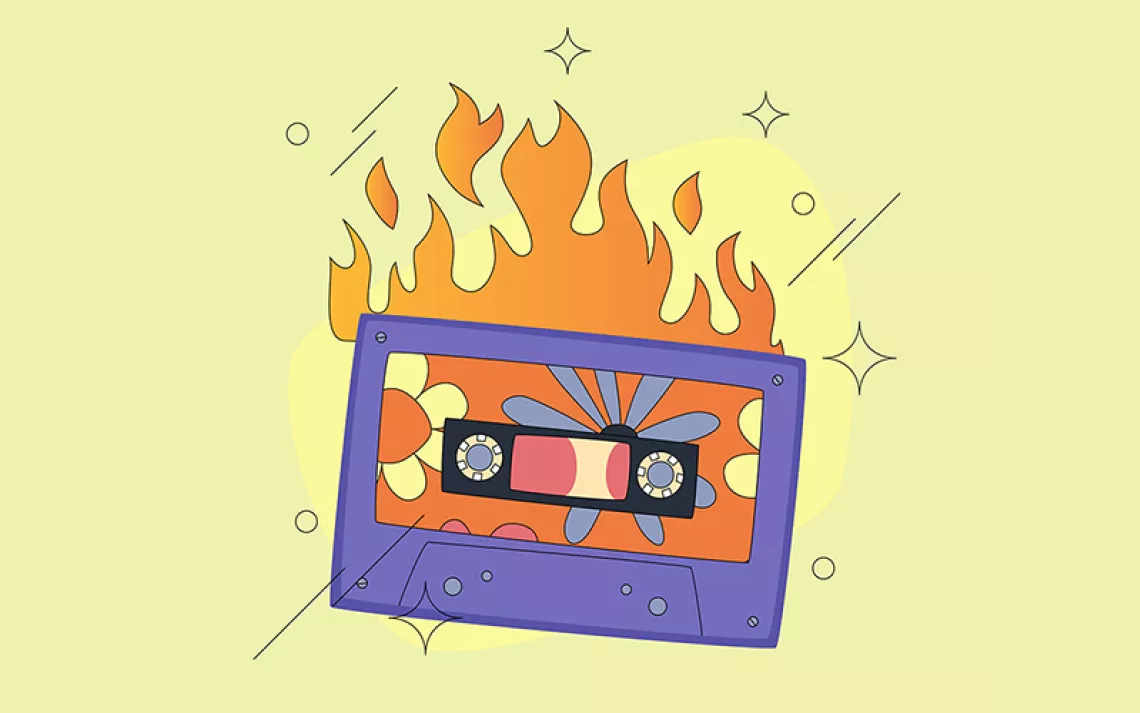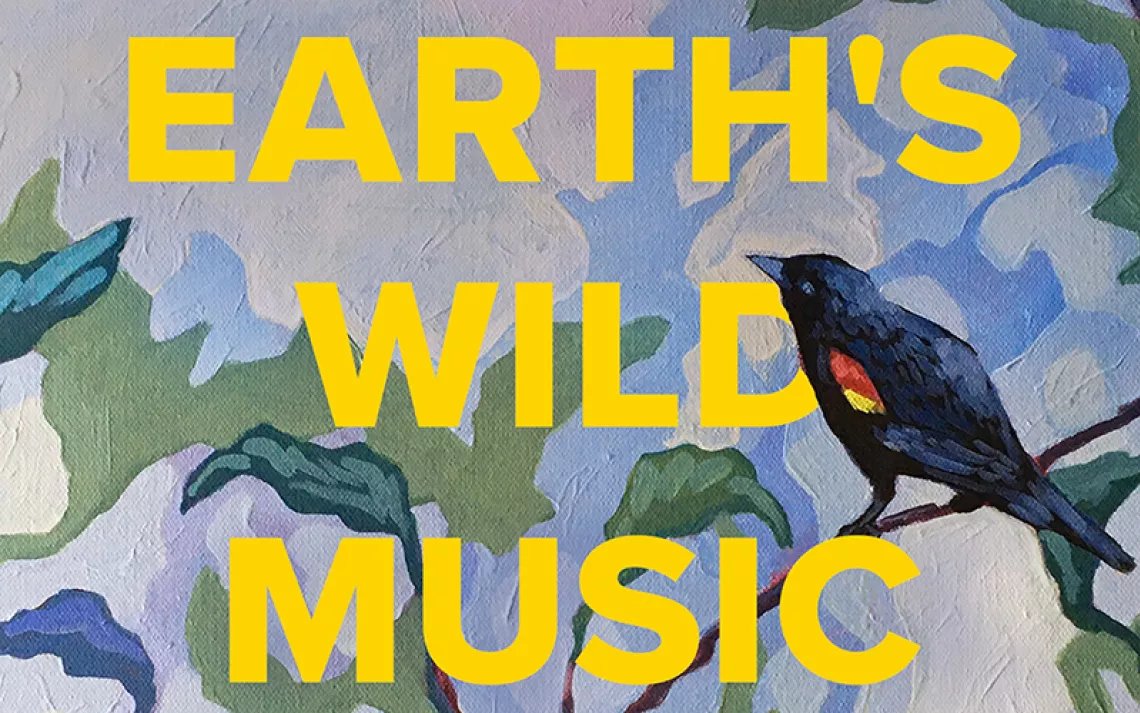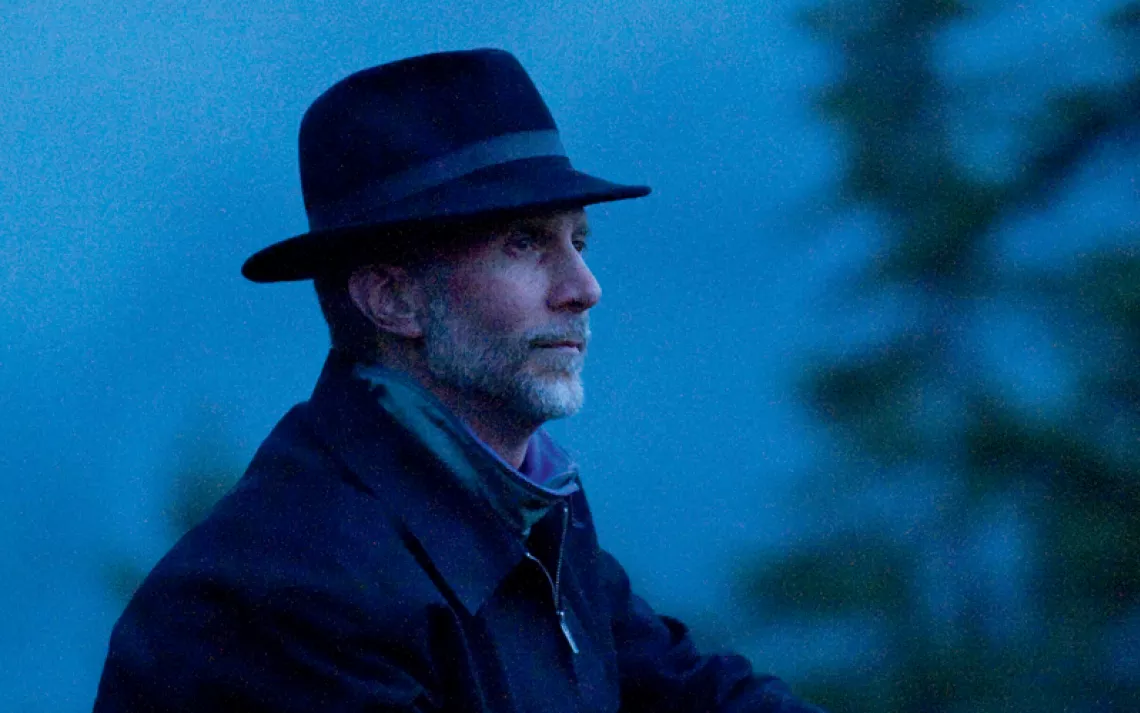Green Beats and Environmentally Conscious Rhymes
Inside the burgeoning eco-hip-hop genre

Nate & Hila combine art and activism during a performance at New York City's House of Yes. | Photo by Kenny Rodriguez
On a January night in Brooklyn, around 100 people—ranging from teens to seniors, club kids to urban farmers—packed the trendy House of Yes nightclub to catch some green beats. A lanky, mustachioed hipster wearing a white onesie stepped onto the stage and began to incant:
If Earth could talk, she'd probably kick a nice rap.
She might flow from off the top, like an ice cap.
From the ceiling, a woman dressed as a globe—her head and limbs comically poking out from a homemade planet costume—descended, her voice cutting through surprised cheers:
I have gardens of Eden, but with so much unrest.
I've got bargains with demons—they do nuclear tests.
Pressed up to my breast, yes, they're sucking me dry.
I don't want to, but I'll kill them before I'll ever die.
For the next two hours, performers Nate & Hila rapped on topics like plastics ("I refill. I reuse. Plastic bags, I kindly refuse") and existential ecological reckoning ("Is Earth other than us, self-balancing steadily? Or is she our mother and we're fucking her oedipally?"). It was a New York taste of eco-hip-hop, a small but growing genre forged by artists bent on spreading environmental advocacy through music.
Eco-hip-hop is doing what rap has been doing for decades—"bringing people together and sharing ideas through unadulterated poetry," as Nathan Oglesby of Nate & Hila puts it. Given the genre's rich tradition as a social protest tool, it's only natural that rappers are now turning their attention to climate change and food supply issues. As with the oral didactic poetry passed down for millennia prior to the written word, hip-hop's power to transmit information lies in its repetitive catchiness. "The musicality and rhythm of it is part of what instills ideas and concepts in people's brains," Hila Perry says.
In the 1980s, Chuck D of the seminal hip-hop group Public Enemy described rap music as "Black America's CNN" for its messaging about systemic racism, Black power, and political reform. Other performers, including KRS-One and Queen Latifah, have continued the tradition of "edu-tainment." While many rappers continue to focus on police brutality and social justice, "Me, I want people to grow food to my music," says Dr. Ietef Vita, a.k.a. DJ Cavem, a Denver-based rapper who grew up in a food desert and became one of eco-hip-hop's pioneers. Public Enemy opened Vita's eyes to white privilege and Black suppression, and he believes that his songs about veganism and environmental justice (with titles like "Wheatgrass" and "Sprout That Life") will likewise inspire and educate. "The seeds will be planted, literally," says Vita, whose latest album, Biomimicz, comes with a package of organic seeds.
The OG ("organic gardener") of hip-hop has performed for Barack and Michelle Obama and regularly spins records alongside fresh produce at a farmers' market he helped bring to his old neighborhood. His fans, he says, range from local kids to the likes of Greta Thunberg.
While only a handful of musicians identify primarily as eco-hip-hop artists, more rappers are addressing the environment along with their broader constellation of concerns, Oglesby says. At 2019's Climate Strike NYC, Xiuhtezcatl Martinez, a hip-hop artist and an activist with the environmental justice group Earth Guardians, rallied 300,000 young activists with his words:
Everything is connected.
Our generation is chosen
To guide the way to the light.
Yeah, this is our movement.
Vita, who is Martinez's official DJ and has collaborated with him on songs like "Sage Up," believes that the 20-year-old exemplifies eco-hip-hop's potential to engage youths in the environmental movement. "Xiuhtezcatl is a product of my environment—a youth in my community bridging the gap with his voice."
This article appeared in the July/August 2020 edition with the headline "Green Beats."
Check out this video from a recent Bioneers conference, which features many of the artists mentioned in this article.
Read an interview with Nate & Hila and check out some eco-hip-hop videos at sc.org/nate-hila.
 The Magazine of The Sierra Club
The Magazine of The Sierra Club



